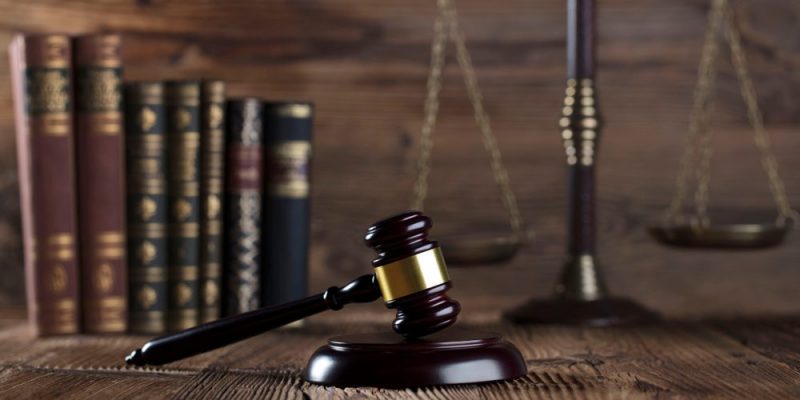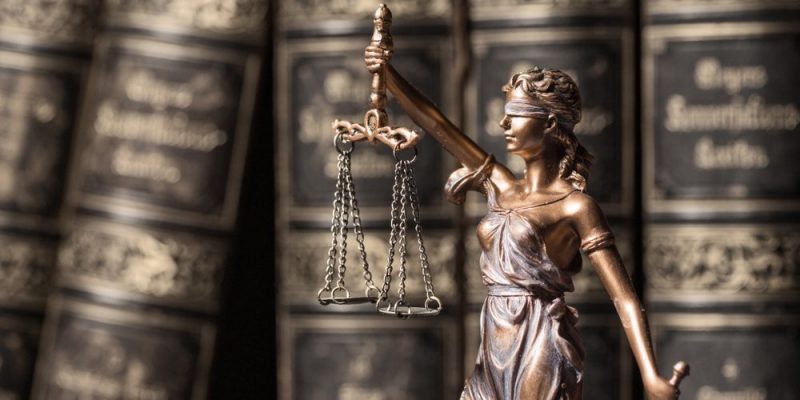We explain what the rule of law is, what its main objective is and how the concept arose. Also, what is the rule of law index.

What is the rule of law?
The rule of law is a political order governed by a system of laws and institutions that are organized according to the provisions of a constitution. Constitutions guarantee political freedoms and fundamental rights of citizens and limit abuses of authority through the separation of powers and judicial control.
In this way, the rule of law is characteristic of democratic regimes. In it, all citizens, including rulers, legislators and judges, are equally subject to the rules established by law and the constitution.
In a rule of law, Limits are set on the ability of government bodies to act. and rules are established that organize the social and political life of citizens on the basis of equal rights, contrary to what happens in dictatorships, in which a person in charge of political power makes decisions without submitting to rules or regulations. to the control of other public institutions.
The legal norms that govern a State of law are enshrined in the constitution, are publicly known and were at some point voted on and approved by representatives of society.
Today, the rule of law is considered a necessary condition to guarantee respect for fundamental rights and human rights within a country, as stated in the preamble of the UN Universal Declaration of Human Rights published in 1948.
Key points
- The rule of law is a political regime based on laws and institutions, which is organized according to a constitution and characterizes democratic countries.
- Its objective is to guarantee the rights and freedoms of citizens and prevent abuses of power in the State, through the judicial protection of individuals and the separation of powers.
- The concept emerged in the 19th century to differentiate absolute monarchies from constitutional states.
- Since the 20th century, the rule of law is usually opposed to dictatorships and totalitarian regimes, which are characterized by suppressing constitutional freedoms and guarantees.
- See also: Public law
The rule of law index
Currently, there is an index prepared by the organization World Justice Project (WJP) that measures the level of compliance with the principles of the rule of law in more than one hundred countries. These principles are four:
- Accountability. The government and private actors are responsible before the law.
- Just laws. The laws are clear, equitable, public and guarantee the rights of all people.
- open government. The processes by which the law is applied and administered are accessible, fair and effective.
- Accessible and impartial justice. Justice is delivered by capable and impartial representatives who are accessible and have adequate resources.
The index measures these principles based on the analysis of eight factors: limits on public powers, absence of corruption, open government, fundamental rights, order and security, compliance with regulations, civil justice and criminal justice.
Some conclusions drawn from this index are that countries with stronger rule of law also tend to have stronger economies, and that more peaceful countries tend to have better rates of compliance with the rule of law.
By 2023, The five countries that top this ranking are Denmark, Norway, Finland, Sweden and Germany. The Spanish-speaking countries that are best positioned are Spain (24th place) and Uruguay (25th place). Chile is ranked 33rd, Argentina at 63rd and Mexico at 116th.
How did the concept of the rule of law arise?

The concept of the rule of law emerged in the 19th century, but it has some antecedents. In the 4th century BC. C., Aristotle (384-322 BC) considered the government of law more convenient than that of any individual. Likewise, 18th century thinkers such as Montesquieu (1689-1755) and Immanuel Kant (1724-1804) proposed defending individual freedoms through law and control of State power.
For its part, the French Revolution of 1789 promoted a legal order based on the equality of all citizens and the rejection of monarchical absolutism, which until then had allowed the king to place himself above the law. On the other hand, the independence of the United States led to the writing of the United States Constitution in 1787 and the promulgation of ten amendments in 1791, which guaranteed a series of rights under the rule of law.
However, the term Rule of law (Rechtsstaat) It was first used in 1832 by the German jurist Robert von Mohl who opposed it to the State of force (Machtstaat). In the latter, characteristic of absolute monarchies, it was the king who made the law, while in the rule of law it is the law that makes (and imposes limits) on the ruler.
Thus, this concept was born as a response to the absolutist State which was characterized by concentrating political power in the monarch, who was not subject to the law and, therefore, could commit abuses without having to be held accountable. In the absolutist regime, furthermore, fundamental rights and individual freedoms were not recognized in any constitutional code.
In this sense, The rule of law was strongly associated with the modern legal constitution that is, to the adoption of constitutions that established the legal foundations of the State.
Rule of law and dictatorships
In the 20th century, The rule of law was many times interrupted by dictatorships (often established through coups d'état) and in particular by the emergence of totalitarian regimes such as Italian fascism, German Nazism and Soviet Stalinism.
totalitarianism It aspires to total control of society by the State, which is why it promotes measures that restrict political and individual freedoms, prevent the division of powers, cancel freedom of expression and violate or annul constitutional guarantees. Likewise, other forms of dictatorship also tend to resort to authoritarian measures that disregard constitutional legality.
Despite this, Totalitarian and dictatorial regimes usually seek a certain legitimation through the development or manipulation of legal tools. For example, Nazi leader Adolf Hitler (1889-1945) managed to concentrate a large amount of power shortly after being appointed chancellor of Germany in 1933, thanks to the enabling law that allowed him to enact laws without depending on Parliament. Furthermore, his racist policy was based on a series of laws from 1935, known as the Nuremberg Laws, which were passed by a Parliament completely controlled by the Nazis.
document.addEventListener(“DOMContentLoaded”, (e) => {
var sliderContainer, slider;
sliderContainer = document.getElementById(‘block_92d5b2ec552d04c3d810c1b06836dcf7’);
if (typeof initSlider !== ‘function’) {
console.log(‘Swiper haven\’t been loaded’);
sliderContainer.className += ‘ fw scroll-snap’;
return;
};
options = {
direction: ‘horizontal’,
speed: 1000,
slidesPerView: ‘auto’,
// slidesPerGroup: 1,
centerInsufficientSlides: true,
// centeredSlides:true,
spaceBetween: 15,
breakpoints: {
720: {
// centeredSlides: false,
// slidesPerGroup: 2,
spaceBetween: 25
},
},
pagination: {
el: ‘.swiper-pagination’,
type: ‘bullets’,
clickable: true
},
}
slider = initSlider(sliderContainer, options);
})
References
- Bobbio, N., Matteucci, N. and Pasquino, G. (Dirs.). (2015). Politics Dictionary. 21st century.
- Choi, N. (2024). Rule of Law. Encyclopedia Britannica. https://www.britannica.com/
- United Nations Organization. (sf). What is the Rule of Law? https://www.un.org/
- Sartori, G. (1992). Elements of political theory. Alliance.
- World Justice Project. (2023). WJP Rule of Law Index. https://worldjusticeproject.org/





